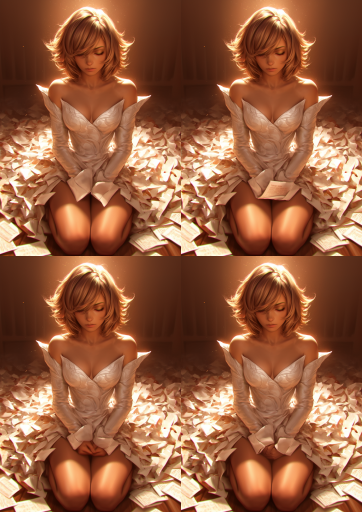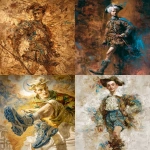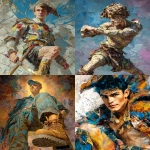Explore the Best AI Image Gallery

AI in Product Photography: Transforming the Visual Landscape
In today's fast-paced digital world, stunning visuals are paramount for capturing consumer attention. Product photography, once solely reliant on human creativity and expert techniques, is now being revolutionized by Artificial Intelligence (AI). This transformative technology not only streamlines the photography process but also enhances the quality and creativity of product images. In this blog post, we will explore the various aspects of AI in product photography, its impact on the creative industry, potential uses, ethical considerations, and the future trends shaping this evolving field.
The Impact of AI on the Creative Industry
AI has made significant inroads into various sectors, and the creative industry is no exception. One of its core advantages is its ability to analyze vast amounts of data and generate content that aligns with consumer preferences. In product photography, AI tools can automatically retouch images, adjust lighting, and optimize angles, ensuring that products are showcased in the best possible light.
By using AI-driven software, photographers can now enhance their productivity. Routine tasks such as background removal, color correction, and image resizing which once demanded significant time and effort have been automated, allowing photographers to focus on the more creative aspects of their work. For brands, this means quicker turnaround times and the ability to launch marketing campaigns faster than ever before.
Potential Uses of AI in Product Photography
The applications of AI in product photography are diverse, and their potential continues to grow. Here are some notable uses:
- Automated Image Editing: AI tools like Adobe Photoshop's neural filters can perform complex edits with a single click, enabling photographers to save hours on retouching.
- Deep Learning Models: AI algorithms analyze thousands of images to understand which styles, backgrounds, and formats work best, helping brands tailor their photography to their target market.
- Virtual Staging: AI can create lifelike virtual backgrounds for product shots, reducing the need for elaborate staging setups and enhancing the appeal of e-commerce sites.
- Personalization: AI can analyze customer data to understand preferences, allowing for personalized product images that cater to specific audience segments.
- Augmented Reality (AR) Integration: Brands are starting to utilize AI-generated product images in AR, providing a realistic preview of products in 3D environments.
Ethical Considerations
While the advantages of AI in product photography are evident, ethical concerns must also be addressed. One key issue revolves around authenticity. As AI-generated images become increasingly convincing, consumers may struggle to differentiate between genuine photography and digitally altered or created visuals. This raises questions about trust and transparency in marketing.
Additionally, the potential for job displacement exists. As AI takes over repetitive tasks, the role of traditional photographers may evolve, leading to concerns about job security in the creative industry. However, rather than replacing human artists, AI should be viewed as a collaborative tool that augments creativity rather than diminishes it.
Future Trends in AI and Product Photography
The future of AI in product photography is brimming with possibilities. Here are some anticipated trends as this technology continues to develop:
- Improved AI Algorithms: As machine learning evolves, AI tools will become more adept at producing high-quality images with minimal intervention. Expect to see continuous enhancements in image recognition, editing capabilities, and predictive analytics.
- Integration of AI with IoT Devices: With the rise of smart devices, AI could seamlessly integrate with cameras and lighting equipment, optimizing settings in real time and further enhancing the photography process.
- Enhanced Consumer Interaction: AI will likely facilitate dynamic image generation based on real-time consumer feedback, offering tailored visuals that resonate with potential buyers.
- Focus on Sustainability: As consumers demand more sustainable practices, AI-driven virtual photography may reduce the need for physical product shoots, therefore minimizing waste.
Conclusion
AI is undeniably transforming the field of product photography, marrying technology with creativity to set new standards for visual storytelling. As brands and photographers embrace AI's capabilities, the creative landscape will continue to evolve, breaking boundaries and redefining possibilities. By understanding the benefits and ethical considerations of AI in product photography, stakeholders can fully leverage its potential while ensuring integrity and credibility in their visual communications.



](https://images.ai-img.art/thumbnails/150/3a60737a5b67fa252207ad1ae6db245a26284f53fb5846996bb34515b39ff269.webp)




](https://images.ai-img.art/thumbnails/150/8c3bd422d50d35735d8fb33bd314a79e30e5b150129d5d09bdad822a2007593f.webp)



](https://images.ai-img.art/thumbnails/150/1614d64dd7156c95db952258978be809eb3db8cea4453fec69c49cbdfe63fa94.webp)